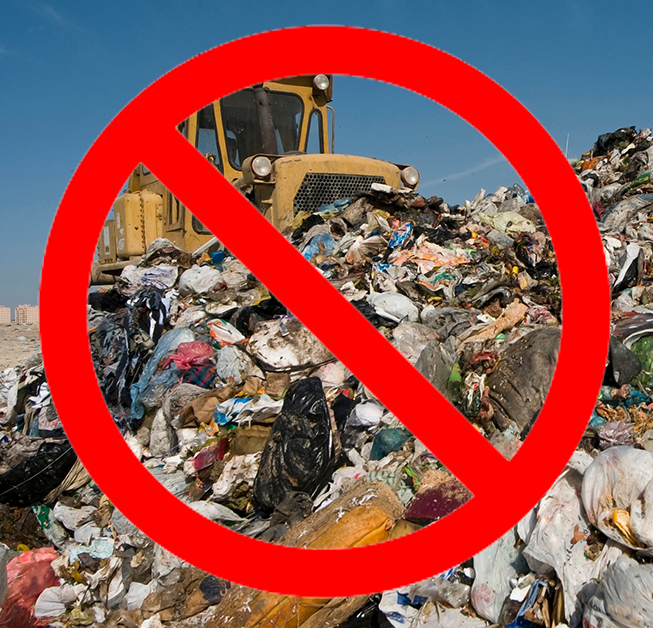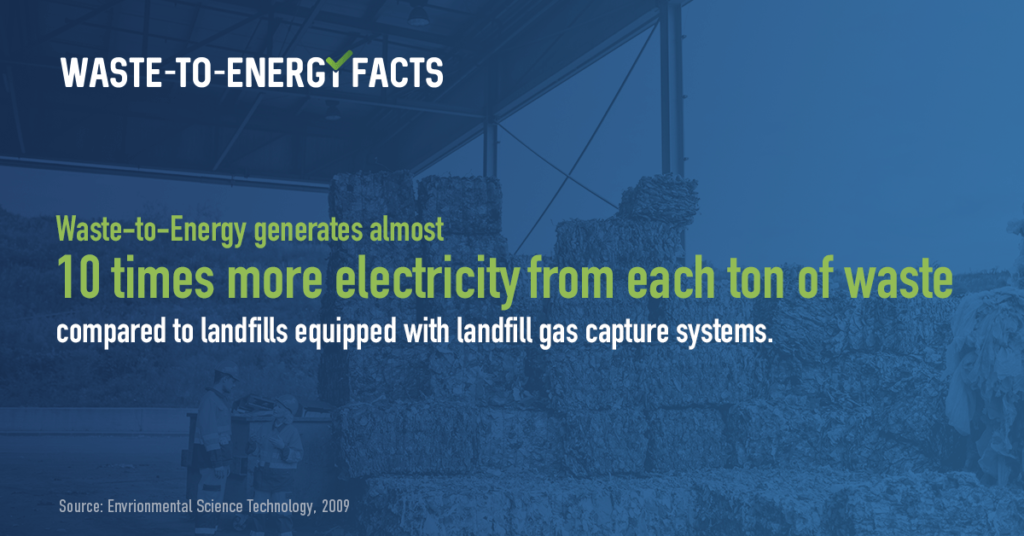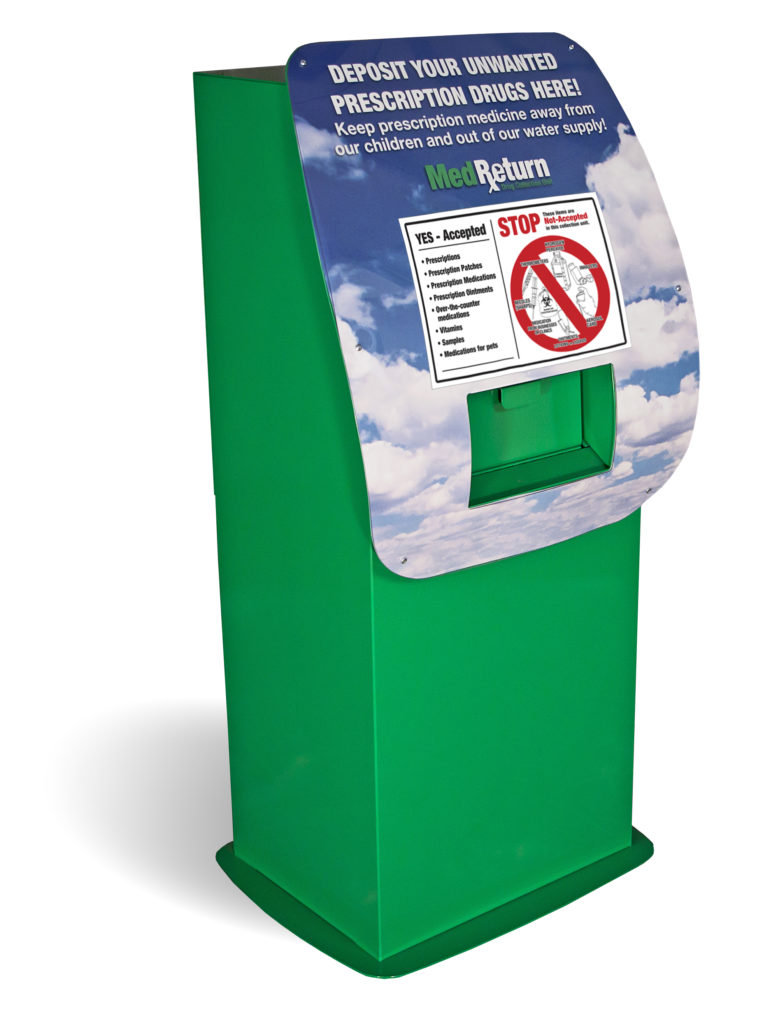Waste-to-Energy Facts
 FACT: Waste-to-Energy is better for the climate than landfills.
FACT: Waste-to-Energy is better for the climate than landfills.
Waste-to-Energy is internationally recognized as a way to reduce greenhouse gas (GHG) emissions. Based on national averages, the U.S. Environmental Protection Agency (EPA) estimates that for every one ton of waste processed at a Waste-to-Energy plant, one ton of GHG is avoided. The EPA’s waste hierarchy ranks various waste management strategies by environmental preference, and of the states with waste hierarchies, approximately 75 percent specifically recognize Waste-to-Energy as preferable to landfilling.

Not a single state defines landfilling as better than Waste-to-Energy as a matter of policy, regulation, or law.

Landfills in California, subject to the most stringent regulations in the country, were recently labeled by NASA as “super emitters” of methane, a greenhouse gas that is 84 times more potent of a climate-warning gas than CO2.
An emerging body of science is finding that landfills emit far more methane than current models predict. Recent studies have concluded measured emissions from landfills average twice the amount reported in greenhouse gas inventories.
 FACT: Waste-to-Energy does not compete with recycling.
FACT: Waste-to-Energy does not compete with recycling.
Communities with Waste-to-Energy facilities have a higher recycling rate than the national average— with some reaching over 50 percent.
Waste-to-Energy does not compete with recycling for economic reasons. The facilities are limited by the amount of steam they can make, and in turn, the amount waste they can process. Taking large quantities of high heat content materials, like paper and plastics, reduces the amount of waste that a facility can process overall and since most Waste-to-Energy revenues come from waste tipping fees, revenues would decrease when processing large amounts of paper and plastics.

Waste-to-Energy facilities also recover more than 700,000 tons of metal each year for recycling – the equivalent amount of steel to build more than seven Golden Gate Bridges.
In the U.S., there are still 250 million of tons of waste going to landfills each year. According to the U.S. EPA and the EU waste hierarchy, the preferred method to deal with waste after recycling is Waste-to-Energy.
 FACT: Waste-to-Energy generates renewable electricity with minimal environmental impact.
FACT: Waste-to-Energy generates renewable electricity with minimal environmental impact.
Waste-to-Energy facilities are resilient sources of baseload energy, meaning they generate their electricity consistently. As a result, they serve as a valuable complement to intermittent renewable resources, such as wind and solar. The facilities are also often built near demand, where power is delivered for distribution to the grid. This proximity reduces the energy losses associated with long-distance transmission of electricity and provides unique opportunities for integration in local community microgrids.
Several Waste-to-Energy facilities export steam to local communities, businesses, and key government infrastructure. The Niagara Falls, NY Waste-to-Energy facility supplies steam to a local industrial park, including a 100 percent recycled paper mill as a perfect example of how Waste-to-Energy contributes to a circular economy. Like all combustion processes (e.g. cars, trucks, landfill gas to energy) and nearly all waste management processes (e.g. landfilling, composting, anaerobic digestion, recycling), Waste-to-Energy facilities have air emissions.
To minimize emissions, Waste-to-Energy facilities employ a carefully controlled combustion process with temperatures in excess of 2,000 degrees Fahrenheit sophisticated air pollution control equipment.
Emissions are monitored both continuously and with periodic testing. Over 99.9 percent of what is coming out of the facility’s stack are normal components of ambient air: such as water vapor, oxygen, carbon dioxide, and nitrogen. Less than three hundredths of one percent are emissions required to be regulated through statewide air quality permits.
 FACT: Waste-to-Energy facilities provide a vital community service.
FACT: Waste-to-Energy facilities provide a vital community service.
In addition to well-paying jobs, clean energy, and innovative waste management, Waste-to-Energy provides one of the only locations for safe disposal of unused and expired prescription medications, preventing drugs from ending up in the wrong hands and preventing them from polluting public water supplies.

 FACT: Studies confirm Waste-to-Energy plants do not pose community health risks.
FACT: Studies confirm Waste-to-Energy plants do not pose community health risks.
Additionally, multiple independent, comprehensive scientific reviews have concluded that Waste-to-Energy facilities do not pose health risks to surrounding communities:

 1. Comprehensive 2017 review of available literature on air quality health risk assessments and health surveillance programs surrounding Waste-to-Energy facilities for Portland, Oregon
1. Comprehensive 2017 review of available literature on air quality health risk assessments and health surveillance programs surrounding Waste-to-Energy facilities for Portland, Oregon
 2. Comprehensive 2014 review of published risk assessment, biomonitoring, and epidemiology studies, performed for Metro Vancouver
2. Comprehensive 2014 review of published risk assessment, biomonitoring, and epidemiology studies, performed for Metro Vancouver
 3. 2015 report on long‐term biomonitoring near three Dutch Waste-to-Energy facilities
3. 2015 report on long‐term biomonitoring near three Dutch Waste-to-Energy facilities
 4. 2008 report from Massachusetts Department of Public Health
4. 2008 report from Massachusetts Department of Public Health
